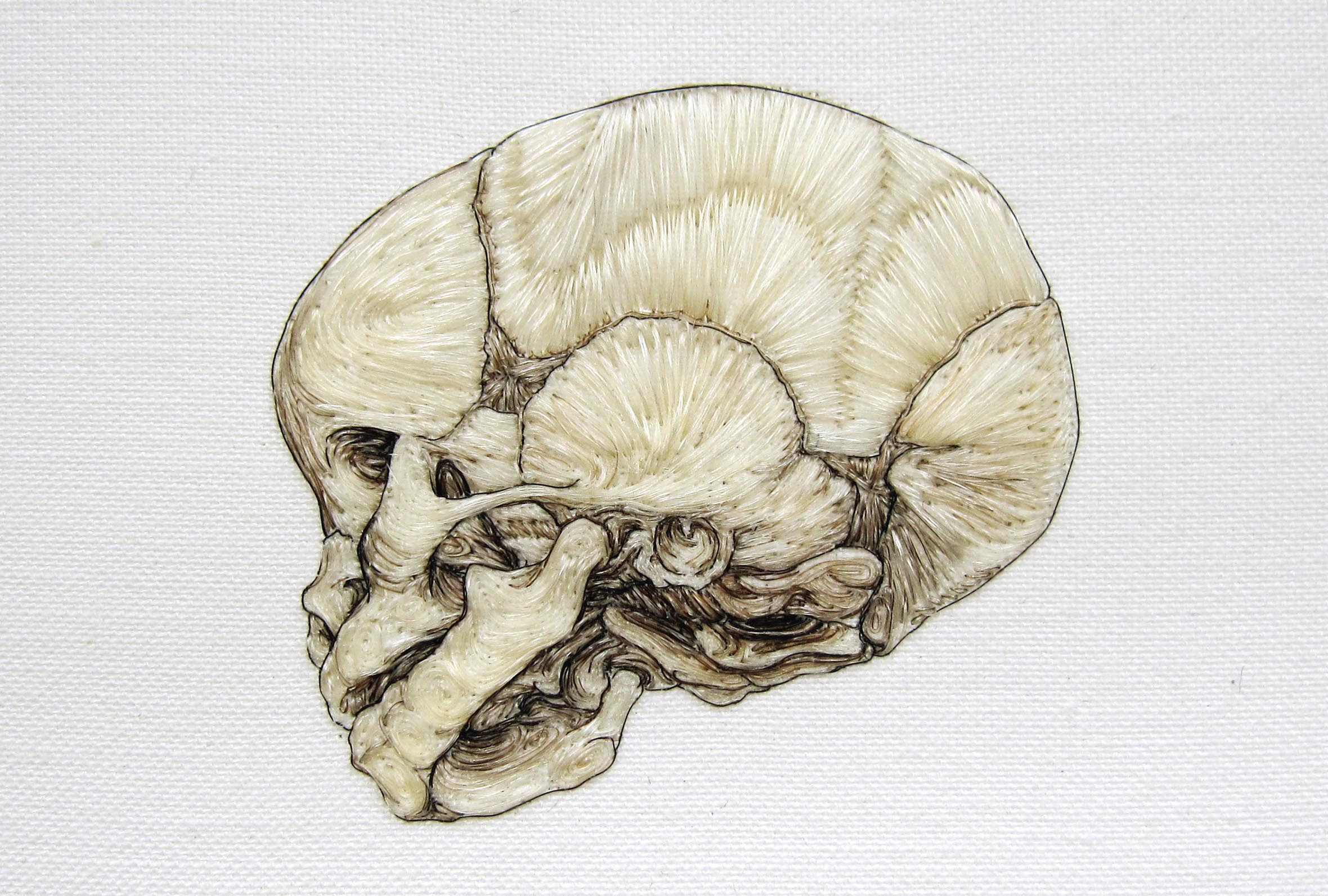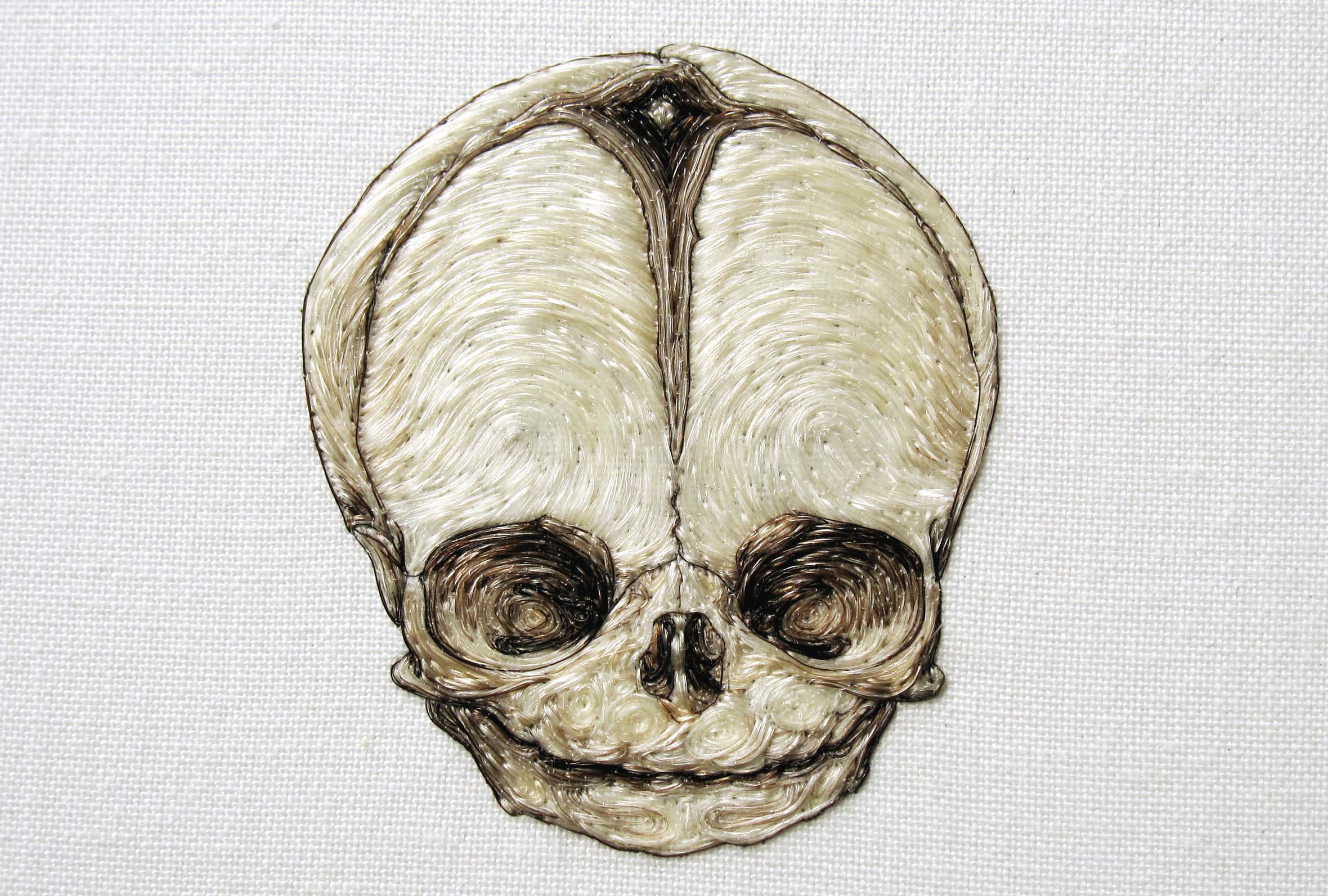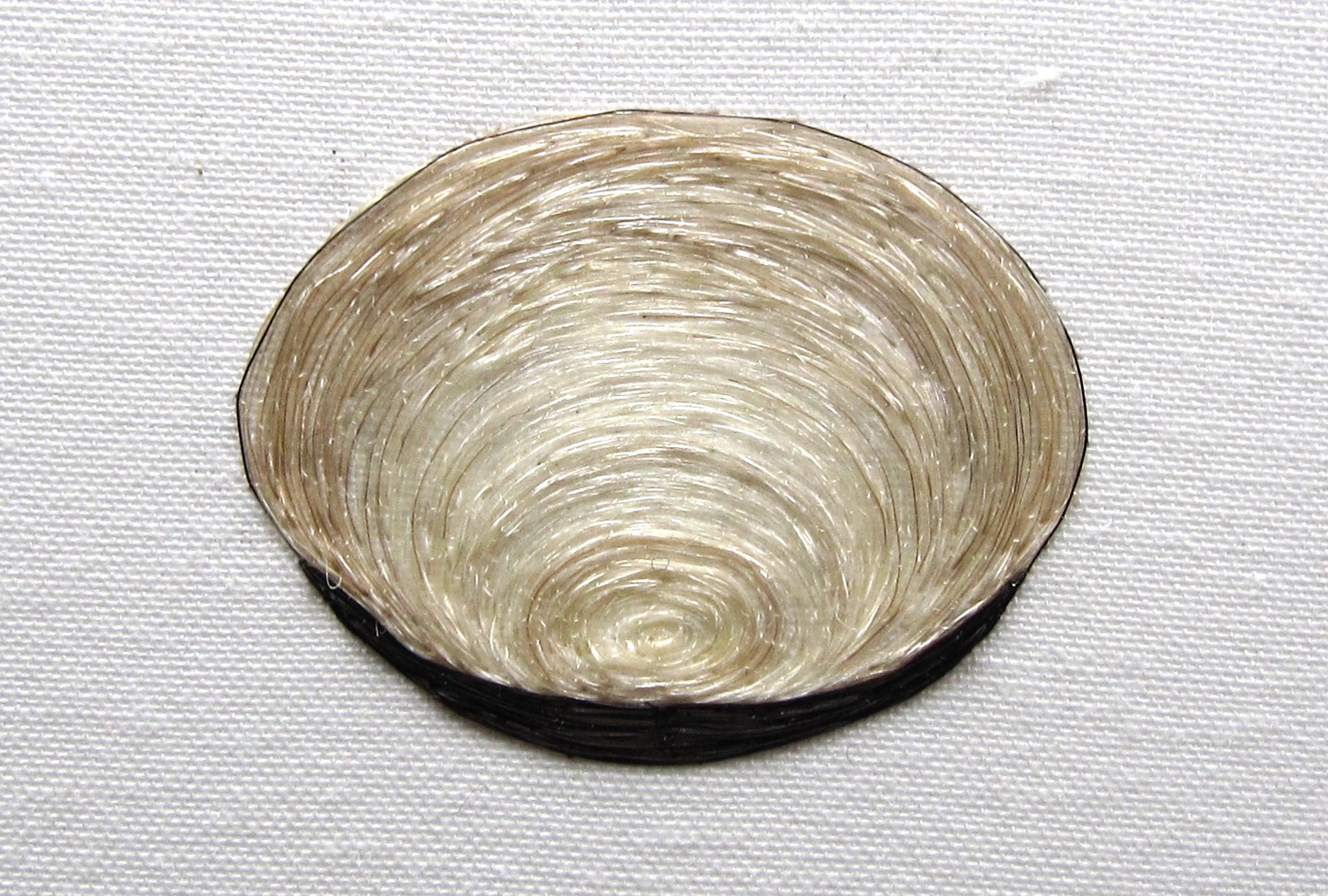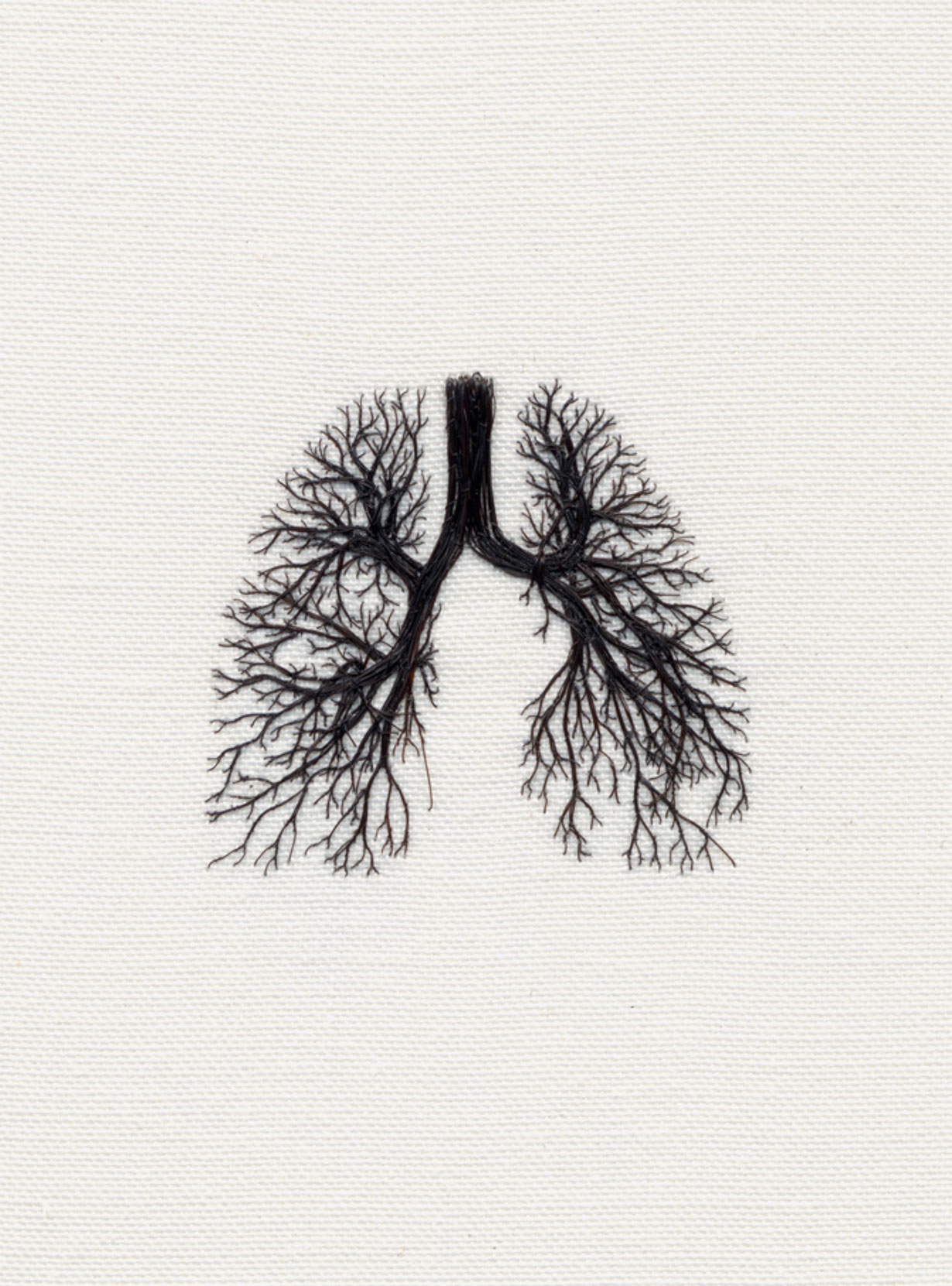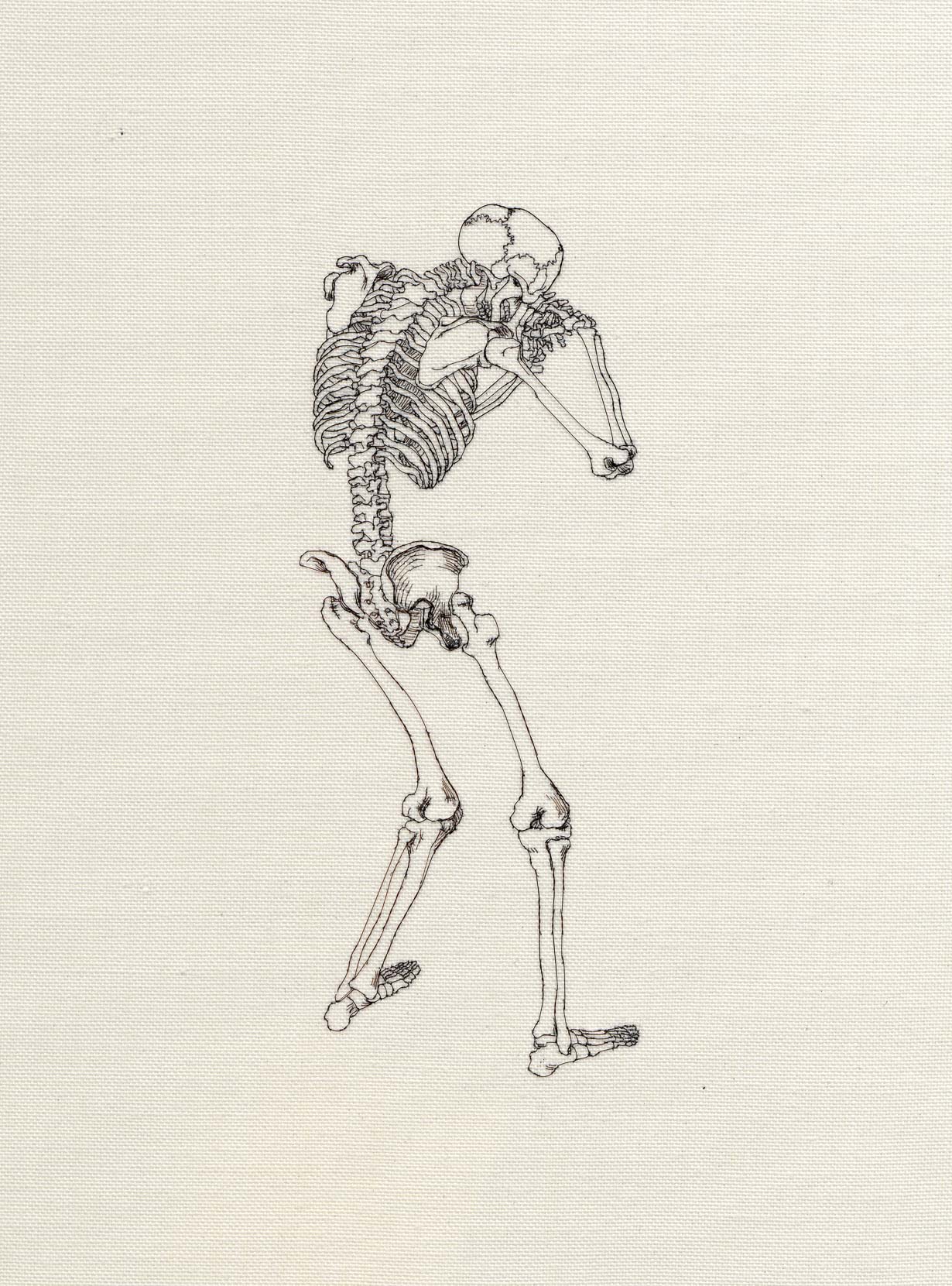ART + CULTURE: Ethereal human hair embroideries by Liyen Chong
Artworks: Liyen Chong + Melanie Roger Gallery
Interview: Emma de Clercq
Artist Liyen Chong combines craft with the conceptual, creating intricate embroideries out of her own hair and that of others. An artist of Malaysian-Chinese descent, Chong’s work combines various disciplines and media, including text-based graphic design work, ceramics and photography. Her hair embroideries feature recurring motifs including mazes, mythical creatures, and as shown in the works below, skulls and skeletons. They were created by stitching human hair onto white cotton, a painstaking task which “takes a very long time, in a very confined sitting position. Hair is also very different from thread, but it gets easier to work with over time”.
"I wanted to use hair, which is something external to the body, to describe the internal of the body”
The origins of hair embroidery can be traced back to the Tang Dynasty (618 – 906). Do you see your embroideries as a continuation of this ancient art form? I had begun working with hair about three years before I made the decision to embroider with it, and only found out about the existence of this ancient Chinese practice a few months after I made it. It was an interesting coincidence, but I wasn’t thinking about relating my works to this when I made my first embroidery. Moreover, it would probably have prevented me from developing my own pictorial language had I known of it. Besides being a rich cultural marker of DNA and the particularities of where I’d come from, I was interested in the Victorian use of hair in mourning jewellery. At the time, my only thought was to find a way of making this material within a contemporary art context. I hope it has something interesting to say about the gesture and practice of craft and its relationship to contemporary art.
Tell us about the works featured here? These works are from two different series. Corporeality focuses on skeletons, and I wanted to use hair, which is something external to the body, to describe the internal of the body. For me this series brings my interest in Victorian mourning jewellery to the fore. Monday and Wednesday are part of a series called 7 days featuring embroideries of foetal skulls. For this I used the white hair from a good friend of mine.
What feelings do you hope your work will elicit from the viewer? I feel it’s not up to me to dictate how I want the viewer to feel. But many people tell me that they usually dismiss it as a fine etching, only to be amazed that it is an embroidery made entirely with hair. I do like the cerebral flip that they get.
- ANTHROPOLOGY OF HAIR
- ANTHROPOLOGY OF HAIR
- ANTHROPOLOGY OF HAIR
- ANTHROPOLOGY OF HAIR
- ANTHROPOLOGY OF HAIR
